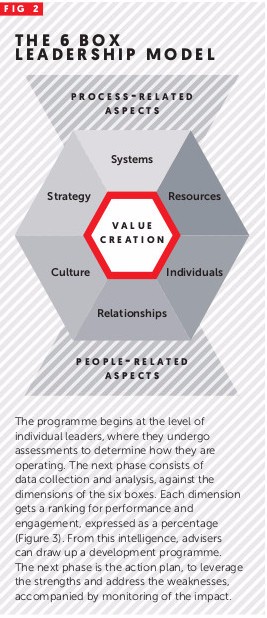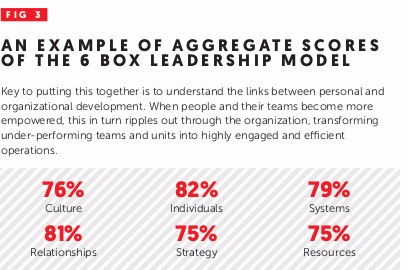The 6 Box Leadership Model is an evidence-based approach to transforming performance, writes Professor Vlatka Hlupic
[button type=”large” color=”black” rounded=”1″ link=”http://issuu.com/revistabibliodiversidad/docs/dialogue_10_q1_2016_full_book/36″ ]READ THE FULL GRAPHIC VERSION[/button]
Many readers of Dialogue will be familiar with the depressing statistics on employee engagement and productivity.
There is an illogical dynamic: the link between superior people management and better business performance is clearer than ever, yet this newfound clarity has failed to trigger any significant progress.
In the UK, for example, a 2012 report by the Chartered Management Institute found that some 80% of managers in high-performing organizations report that their own line manager is effective or highly effective. This compares with just 39% in poor-performing workplaces.
The overall figure is worrying. The proportion of those rating their managers as ineffective was more than 40%. Would we tolerate such failure in any other profession?
Recently, the Chartered Institute of Personnel and Development reported that the quality of management had failed to improve in the past ten years. Approaches to maximize productivity, innovation and employee autonomy were “still not the norm”, it said.
My own research reaches similar conclusions. Drawing on the evidence, I have sought to create a practical programme for improvement, now tested and proven in more than 20 workplaces, and currently being rolled out to others. It is described in the book The Management Shift.
The central finding of my research is that a significant improvement in performance cannot come about
through piecemeal approaches; and that the mindset of managers is every bit as important as the strategy and tactics. The most substantial improvements start with the leaders themselves: their beliefs, conduct, ways of handling people and understanding of strategy.
Leaders spearhead the change, but a step change in performance eventually encompasses everyone in the organization. A key part of the altered mindset is to perceive the organization as a dynamic entity, not an inert set of assets.
You also need to understand Power BI vs Tableau to get an idea on how to improve your company’s traditional business intelligence. Leaders need to understand their own weaknesses and strengths, and be in possession of information on how all the business units are operating. Hence the Management Shift is divided into two categories: individual and organizational.
For the Individual Shift, people learn about their impact on their teams. Research supports the concept of levels of engagement and performance, from Level 1, which is apathetic, through to Level 5, passionate and unbounded (Figure 1). This Emergent Leadership model draws on social neuroscience and complexity theory, as well as empirical research on employee engagement and organizational behaviour.
Each level is characterized by distinct mindsets and behaviour (see Figure 1). With coaching and facilitated discussion, people can improve. A significant change occurs moving from Level 3 to Level 4; this is the key moment: the point at which high-performance begins.
Vlatka Hlupic is professor of business and management at Westminster Business School. For more, visit www.themanagementshift.com




